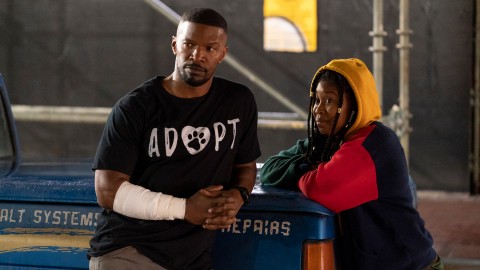
When it first swims into view, jutting out of the darkness like a cracked tooth in a bloody mouth, it takes your breath away. It’s the stuff of myth and legend, really; a story that’s been retold so many times now, it no longer feels real, a word now synonymous with tragedy and the arrogance of man: Titanic.
- READ MORE: Video games can predict the future
The camera’s not fixed – you can swivel it as you like, although your route is predestined – but it’s hard to look away from the view beyond the grubby window of your little submarine. It’s an unhurried journey as the immersible’s spotlight pans slowly across the ship’s bow, a narrator retelling the events of April 15 as it does so. When the remotely operated vehicle (ROV) is dispatched and you sink down through #2 Hatch, past the rusted remains of Decks D, E, F and G towards the main cargo, it dips below the rusticles hanging from the ceiling and trails behind an inky, dark-scaled fish into the mailroom.
There is no melancholic score. No sound effects. No bombastic jumpscares. Your watery wander through the wreck is silent and dark, occasionally accompanied by marine life, but mostly not. When the narrator goes silent, so does your exploration. It makes for a sombre, reflective experience that’s surprisingly claustrophobic.

It’s amazing to me that I can pull on a VR headset and walk these corridors. That I can slip through a doorway and gaze at what remains of the Strauss Suite 2.5 miles below the surface of the water, see the clock still sitting on the mantelpiece, and the final settings on the wall of the Marconi Room. Not only will I never be able to survey the wreck this closely in real life – not to mention so much of the real documentary footage is frustratingly grainy – soon enough no one will be able to; succumbing to salt corrosion and the metal-munching bacteria that subsumes it, eventually Titanic will collapse into itself and disappear entirely.
I know I’m late to the party, but up until this point, I had marvelled at the PlayStation VR World game – well, technical demo, really – but essentially chalked VR up to gimmicky tech. Yet it took just an hour in the company of Titanic VR to fully comprehend just what the technology could offer, not just in the entertainment space, but education, too. It’s one thing to read a book or watch a video; it’s another entirely to feel the weight of the ocean press down above you as you explore it yourself.

The thing about VR, though, is that you can only truly understand it once you’ve tried it yourself. It’s not something that can be done vicariously through somebody else. Yes, it’s cool to watch your pal jump when a shark attacks in the similarly watery-themed Ocean Descent – watch them crane their heads to follow the terrifying creature that’s circling around them – but it’s a different matter entirely to experience it for yourself. It truly transports you, mind and body, elsewhere; I have fallen over before now, trying to lean on a virtual doorway or a chair arm that doesn’t exist.
The price, too, remains prohibitive. Yes, the cost of the hardware is falling, but without games like Half-Life: Alyx – a game that looks and feels astonishingly real thanks to Valve’s new hardware – to tempt us, it’s a tough sell indeed. Even at the cheap(er) end of the spectrum, you’ll need to part with hundreds and hundreds of pounds to get set up, and right now it might feel like there’s simply not enough compelling games to justify it.

But bloody hell, can it bring experiences to life in a way other media just can’t – and I do include even traditional games in that. I wonder just how much more impactful a school project about Titanic might be if the children could roam throughout that shipwreck for themselves, or what other historical points in history could be so much more engaging if teachers could work alongside game designers to craft historically accurate yet immersive environments. The industry has dabbled with this before, of course – one peek at the App Store is all you need as proof that gaming and education are good buddies – but a formal partnership between educationists, historians and quality VR studios could be astonishing in all the right ways.
So if your VR headset is sitting, unused, in a box someplace, it might well be time to pull it out. While the development of VR games remains spotty in both pace and quality, there’s a wealth of immersive experiences out there for you to try. Not only might it help the homeschooled children in your bubble bring their school projects to life, but it’s also the perfect way to escape lockdown and the same four walls for a couple of hours, too. Trust me, I know.
The post Fed up of being stuck indoors? Homeschooling? Dust off your VR headset appeared first on NME | Music, Film, TV, Gaming & Pop Culture News.









